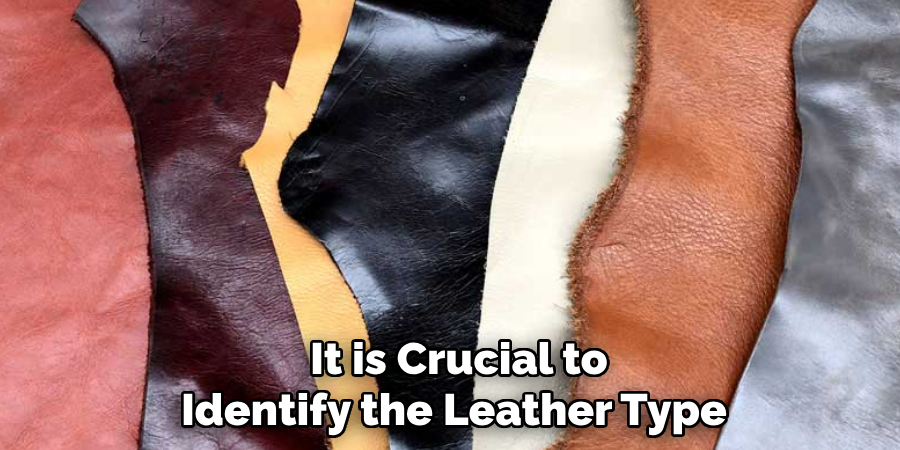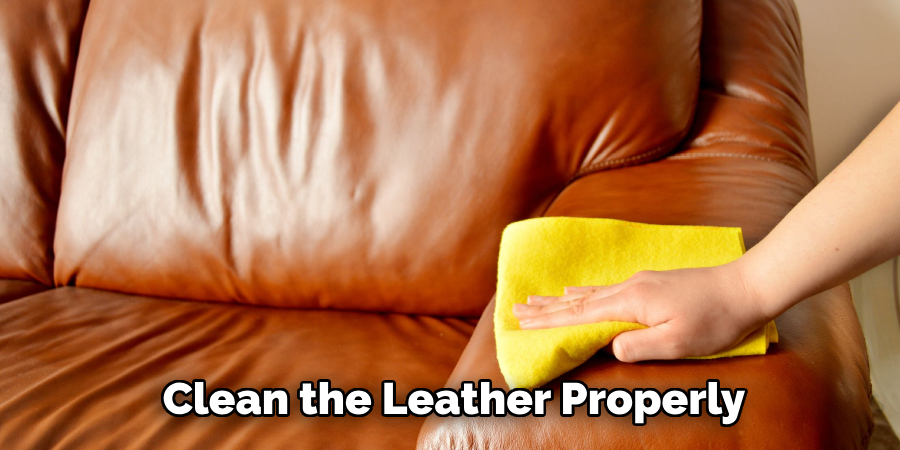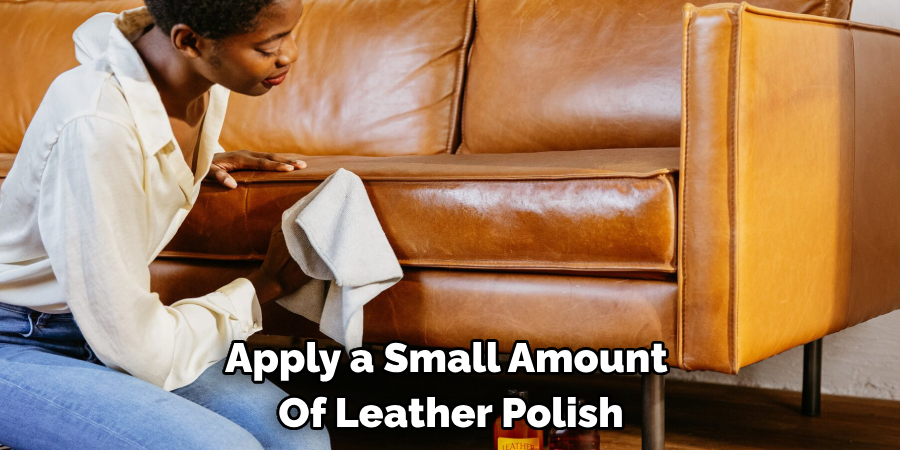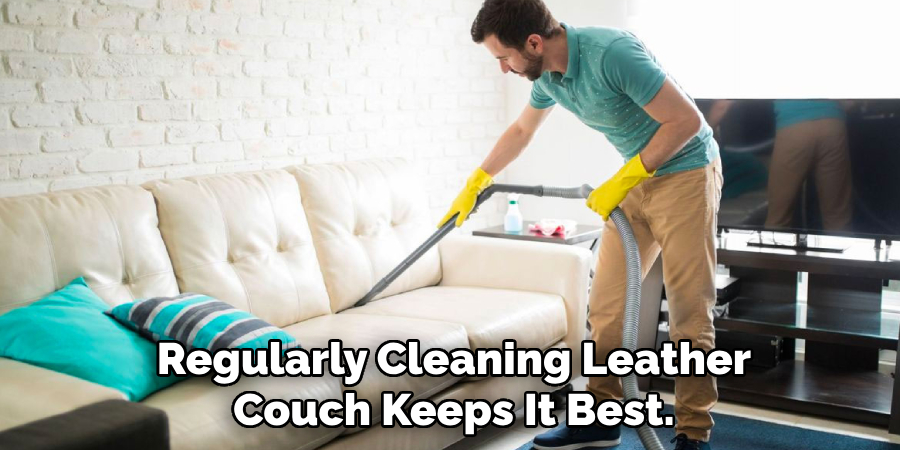Polishing a leather couch not only enhances its appearance but also helps maintain its durability and texture. Over time, leather can lose its natural shine due to dust, dirt, and regular use. This guide explores the key aspects of how to polish a leather couch. With the right tools and techniques, you can restore your leather couch to its former glory, ensuring it remains a stylish and comfortable centerpiece in your living space.

Importance of Polishing a Leather Couch
Polishing a leather couch is essential for preserving its quality and extending its lifespan. Regular polishing helps protect the leather from cracking, drying out, and fading, especially when exposed to sunlight or fluctuating temperatures. It also enhances the couch’s natural luster, elevating the overall aesthetic of your living space. Furthermore, polishing creates a protective layer that repels dirt and moisture, making it easier to clean and maintain. By taking the time to polish your leather couch, you not only maintain its functionality and comfort but also ensure it remains an elegant and timeless piece of furniture.
Identifying Your Leather Type
Before polishing your leather couch, it is crucial to identify the type of leather you are dealing with, as different types require different care methods. Here are the main types of leather you may encounter:
Full-Grain Leather:
Full-grain leather is the highest quality and most durable type of leather. It retains the natural grain, showing imperfections and markings that give it a unique character. Polishing full-grain leather requires gentle products that nourish and protect without altering its natural texture.
Top-Grain Leather:
Top-grain leather is slightly less premium than full-grain but still offers good durability and a smooth finish. It undergoes processing to remove imperfections, making it more uniform in appearance. A standard leather conditioner and polish work well for this type.
Bonded Leather:
Bonded leather is made from scraps of leather that are mixed with other materials and bonded together, often with a polyurethane coating. It is less durable and more prone to wear and tear. Gentle cleaning with minimal moisture and mild polish is recommended for bonded leather.

Faux Leather:
Faux leather, also known as synthetic leather, is made from artificial materials and is designed to mimic the look of genuine leather. Since it lacks the natural oils found in real leather, polishing involves using products specifically made for synthetic surfaces to avoid damage.
10 Methods How to Polish a Leather Couch
1. Clean the Surface Before Polishing
Before applying any polish to your leather couch, it is essential to clean the surface thoroughly. Use a damp microfiber cloth to wipe down the leather, removing dust, dirt, and any residue. For a deeper clean, use a leather-safe cleaner and gently rub it into the material using circular motions. Allow the couch to dry completely before moving on to the polishing step.

2. Choose a High-Quality Leather Polish
Not all polishes are suitable for every type of leather. Select a high-quality leather polish specifically designed for furniture, ensuring that it does not contain harmful chemicals or silicones that could damage the material. A good polish should nourish, protect, and enhance the natural shine of the leather without leaving a greasy residue.
3. Test the Polish on a Small Area
Before applying polish to the entire couch, test a small, inconspicuous area to ensure it does not cause discoloration or an unwanted texture change. Allow the test area to dry and observe the results before proceeding. This precaution helps prevent irreversible damage to your couch.
4. Apply the Polish Using a Soft Cloth
Use a clean, soft cloth to apply the polish in circular motions. Avoid using too much polish at once, as this can create an uneven or overly shiny appearance. Work in sections to ensure an even distribution of the polish, allowing it to penetrate the leather effectively.

5. Buff the Leather for a Natural Shine
Once the polish has been applied, use a dry microfiber cloth to buff the leather. This process enhances the shine and removes any excess polish, preventing a sticky or overly glossy finish. Buffing also helps distribute the polish evenly and improves the overall appearance of the leather.
6. Use Natural Oils for Added Softness
If you prefer a more natural approach, consider using oils such as coconut oil, olive oil, or mink oil to polish your leather couch. Apply a small amount of oil onto a soft cloth and rub it into the leather. Allow it to sit for a few minutes before buffing with a clean cloth to bring out a natural sheen.
7. Avoid Over-Polishing
Over-polishing your leather couch can lead to buildup, making the surface feel sticky and attracting dirt. To prevent this, polish your couch only when necessary, typically every few months or as needed. Regular maintenance without excessive polishing ensures the leather remains supple and clean.
8. Protect the Leather After Polishing
Once you’ve polished your leather couch, consider applying a leather protector to help maintain its condition. A leather protector adds a protective barrier against spills, stains, and general wear and tear. This step ensures that your couch remains polished and well-maintained for longer periods.
9. Keep the Couch Away from Direct Sunlight
Polished leather can fade and dry out when exposed to direct sunlight for extended periods. To preserve the integrity and shine of your couch, position it away from windows or use curtains and blinds to minimize sun exposure. Additionally, consider rotating cushions and pillows to prevent uneven wear.
10. Maintain Regular Cleaning and Care
Polishing is just one part of leather maintenance. Regularly dusting, vacuuming, and conditioning your leather couch will keep it looking its best. Implementing a consistent cleaning routine prevents the need for frequent polishing and helps extend the life of your leather furniture.

Things to Consider When Polishing a Leather Couch
1. Type of Leather
Understanding the type of leather your couch is made of is critical to ensure you use the proper cleaning and polishing methods. Using the wrong products on a specific type of leather can lead to damage, discoloration, or a lackluster appearance. Always verify if your couch is full-grain, top-grain, bonded, or faux leather before starting the process.
2. Product Ingredients
Many leather care products contain chemicals or additives that may harm the leather’s surface or affect its longevity. Check the ingredients and avoid products with harsh chemicals, silicone, or alcohol, as these can dry out the leather and cause cracks over time. Opt for products labeled as leather-safe and tested.
3. Frequency of Polishing
Polishing leather too frequently can lead to buildup, which might dull the surface instead of enhancing its shine. Develop a schedule based on your couch’s usage and condition. Typically, polishing once every three to six months should suffice, with light cleaning and conditioning performed in between.
4. Environmental Factors
External factors like sunlight, humidity, and temperature changes can impact the condition of your leather couch. Ensure your furniture is placed in a controlled environment, away from direct sunlight, excessive heat, or damp areas. These steps help maintain the leather’s natural properties and ensure your polishing efforts last longer.
5. Testing Before Application
Testing any product on a small, inconspicuous area of the couch is a necessary step to avoid potential damage. This trial ensures the polish does not cause discoloration, uneven texture, or unwanted effects, saving you from costly repairs or replacements.
Common Mistakes to Avoid
1. Using the Wrong Cleaning Products
One of the most common mistakes is using general household cleaners or products not specifically designed for leather. These can contain harsh chemicals that damage the leather surface, leading to cracks, discoloration, or fading over time. Always opt for pH-balanced or leather-specific products to ensure safe cleaning and polishing.
2. Skipping the Test Spot
Many people overlook testing a product on a small, hidden area of their couch before applying it to the entire surface. This mistake can lead to irreversible damage, such as staining or textural changes, if the product reacts poorly with the leather. Always perform a patch test to ensure compatibility with your couch’s material.
3. Over-Saturating the Leather
Applying too much polish, oil, or cleaning solution can oversaturate the leather, leaving behind sticky residues and clogging the pores. This can attract dirt and dust, weakening the leather over time. Use small amounts of product and apply it in layers as needed.
4. Forgetting to Buff After Polishing
Failing to buff the leather after polishing can result in an uneven finish or an excessively glossy appearance. Buffing ensures that the polish is evenly distributed and eliminates any residual product, providing a smoother and more natural shine.
5. Polishing Dirty Leather
Applying polish directly onto dirty leather traps dust and debris, which can scratch the surface and create a dull finish. Always clean your leather couch thoroughly before polishing to achieve the best results and maintain its pristine condition.
Conclusion
Proper care and maintenance are essential to keep your leather couch looking luxurious and lasting for years to come. By following the outlined steps and avoiding common mistakes, you can preserve the natural beauty, softness, and durability of your leather furniture. Thanks for reading, and we hope this has given you some inspiration on how to polish a leather couch!
Huston Douthit is a distinguished figure in the world of furniture design, with a decade of expertise creating innovative and sustainable furniture solutions. His professional focus lies in merging traditional craftsmanship with modern manufacturing techniques, fostering designs that are both practical and environmentally conscious. As the author of Fruniturix, Huston delves into the art and science of furniture-making, inspiring artisans and industry professionals alike.
Education
- RMIT University (Melbourne, Australia)
Associate Degree in Design (Furniture)- Focus on sustainable design, industry-driven projects, and practical craftsmanship.
- Gained hands-on experience with traditional and digital manufacturing tools, such as CAD and CNC software.
- Nottingham Trent University (United Kingdom)
Bachelor’s in Furniture and Product Design (Honors)- Specialized in product design with a focus on blending creativity with production techniques.
- Participated in industry projects, working with companies like John Lewis and Vitsoe to gain real-world insights.
Publications and Impact
In Fruniturix, Huston shares his insights on furniture design processes, materials, and strategies for efficient production. His writing bridges the gap between artisan knowledge and modern industry needs, making it a must-read for both budding designers and seasoned professionals.


